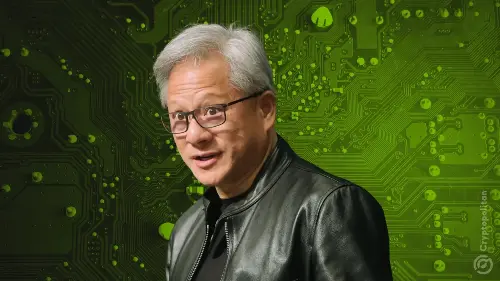
Nvidia CEO Jensen Huang is set to headline Computex 2025 with a keynote that underscores the company’s pivotal role in the evolving landscape of artificial intelligence.
Scheduled for May 19 at 11:00 a.m. Taiwan Time (May 18, 8:00 p.m. Pacific Time) at the Taipei Music Center, Huang’s address will kick off the event themed “AI Next.”
This is Asia’s first significant assembly of computer and chip executives since US President Donald Trump threatened broad reciprocal tariffs in April, pressuring companies to increase their production in the United States.
The Computex trade show will take place from May 20 to 23 and is anticipated to have 1,400 exhibitors. Among the top executives attending are Foxconn Chairman Young Liu and Qualcomm CEO Cristiano Amon and Huang, who gained popularity last year for his enthusiasm and active interest at the fair.
Huang changes Computex’s focus from consumer goods to showcasing technological advancements
This month, K.C. Liu, the founder and chairman of Advantech, stated that Huang has done a lot to help the show change from focusing on consumer goods like laptops to showcasing technological advancements and giving companies much-needed exposure for their products.
Moreover, Ian Cutress, chief analyst at consulting firm More Than Moore, speculated that if the headline last year was about AI PCs, this year will most likely be about collaboration driven by macroeconomics.
A variety of technology companies have provided examples to support these claims. In April, Nvidia announced that it would collaborate with TSMC, Foxconn, and Wistron to develop $500 billion of AI servers in the United States over four years.
It is anticipated that Huang, who will give a keynote address on Monday, will reveal additional Nvidia collaborations with Taiwanese AI server companies Foxconn and Quanta.
Cutress stated that it is evident that Nvidia relies significantly on the Taiwanese ecosystem to meet its needs. According to his reasoning, there is a chance that the political tariff situation would be acknowledged.
Another problem that Nvidia and AMD need to address is the tighter export laws that control the sale of advanced AI graphics processing units to China.
Another example is that while MediaTek intends to present its vision for edge AI, which entails deploying AI software on devices close to the data source and cloud AI, Qualcomm said it will offer its AI PC advancements. AMD, on the other hand, will talk about its developments in AI-powered personal computers and gaming.
Meanwhile, Advantech, the world’s biggest manufacturer of industrial computers, is returning after a ten-year break with plans to demonstrate its artificial intelligence systems.
Lip-Bu Tan, the new CEO of Intel, will host a private dinner with Taiwanese partners instead of giving a public speech at Computex this year.
Huang reveals a massive shift in the AI models
The change in how AI models are trained is another notable development in the technology ecosystem. Jensen Huang stated that Nvidia is well-positioned to navigate a shift in the artificial intelligence industry, in which businesses are shifting from training AI models to receiving detailed responses.
Speaking at the company’s annual software developer conference in San Jose, California, Huang defended the company’s market dominance in selling customers expensive AI chips. This addressed investors’ recent questions regarding this strategy after China’s DeepSeek created a competitive chatbot that reportedly uses fewer AI chips.
He did not, however, reassure investors with his presentation. Shares of Nvidia dropped 3.4%, and the chip index experienced a decline of 1.6%.
On stage at the conference, Huang, dressed in his usual black leather jacket and jeans, said that nearly everyone was wrong. He called the event the AI Super Bowl.
He referred to autonomous AI agents that need minimal human intervention for routine tasks, saying the amount of computation they needed due to agentic AI, as a result of reasoning, was easily 100 times more than they thought they needed this time last year.
As the AI market shifted from training models, like chatbots, on massive datasets to inference, where models apply that training to generate user responses, Nvidia’s high-priced chips are now facing pressure from this technological shift.
Your crypto news deserves attention - KEY Difference Wire puts you on 250+ top sites
